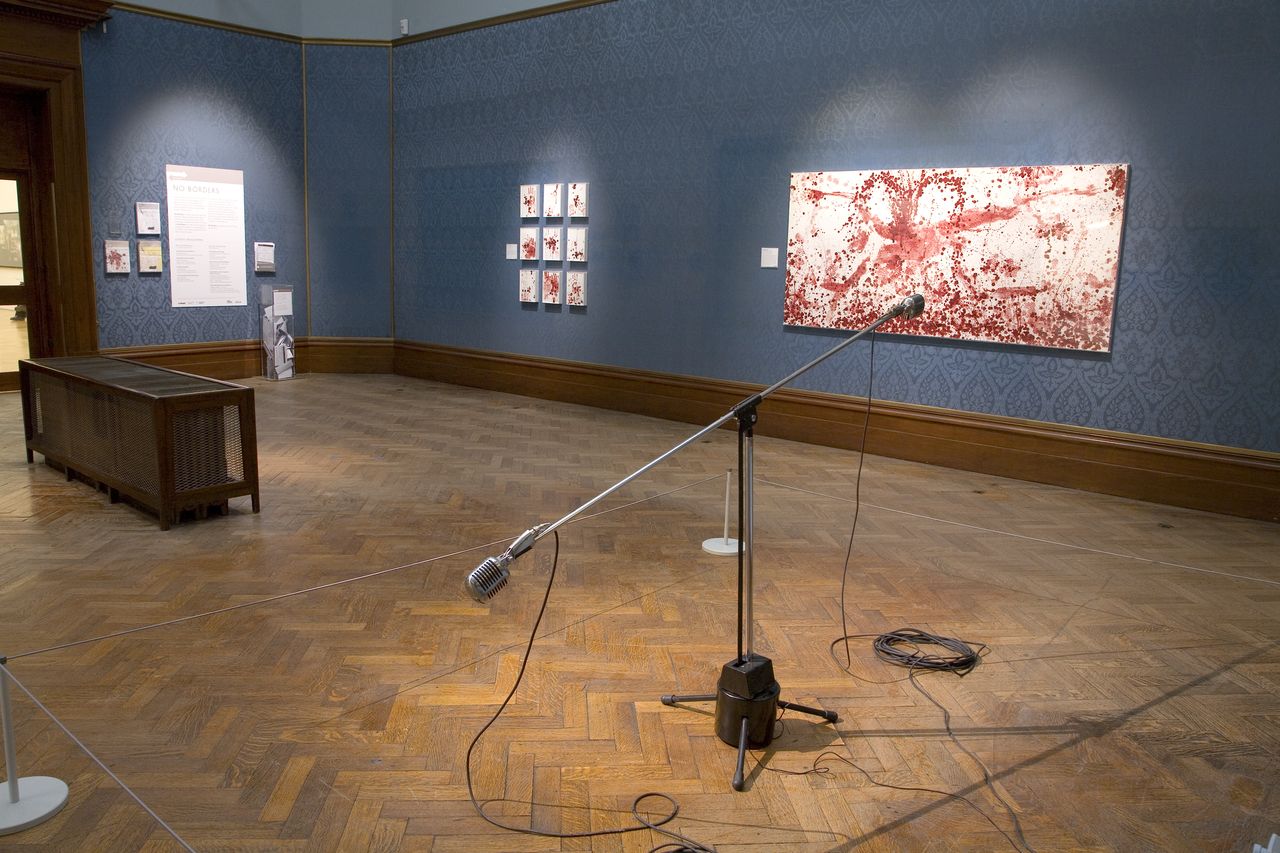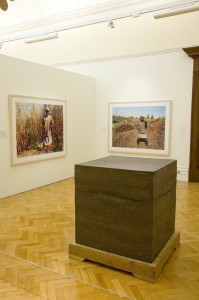A-wei A-wei with Art’s Borders
The exciting modern ‘No Borders’ exhibition is an artistic intervention at the Bristol Museum. It critiques and challenges globalization, which many have said is a positive global phenomenon. Walking into this exhibition I was hit by predominately negative portrayals of globalization and the nature of borders from different cultural perspectives. Due to the many different mediums used – film, photography, paintings, sketches and even venetian blinds – it stimulated my senses, pushing me out of my comfort zone.
The great highlight was to finally have the opportunity to see artwork by the internationally acclaimed Ai Weiwei. Indeed, this is the first time his piece A Ton of Tea has appeared in the UK. Needless to say, he is one of the most famous current examples of an artist intertwining art and politics, and has made a big impact in the media both within art circles and in wider human rights debates. His life has even ‘become’ art due to Howard Brenton’s film about Weiwei’s arrest, which was premiered last week. This resurgence of Weiwei in the news (and within other art mediums) makes this exhibition all the more stimulating and pertinent. With Ai Weiwei, the boundaries between politics and art are definitely broken down.
Ai Weiwei’s artwork, A Ton of Tea, encapsulates the show’s examination of what cultural symbols mean in an ever changing, technology dominated, globalised world. It does this through an initially placid way in comparison to many of the other artworks that feature overtly violent and upsetting images. Ai Weiwei however gets his point across without being crudely shocking: he presents us with dried and compressed tealeaves that have been moulded into a cube block. What can be more domestic than this, I asked myself? However, after viewing some of the other more outspoken artworks I felt myself fired up for the challenge of decoding and responding to this minimalistic piece. I spent more time looking at it than any of the other artwork, which is ironic because it is an aesthetically minimal piece.
The smell of A Ton of Tea is intriguingly subtle. This caught me by surprise and even made me doubt my own senses, so I started to see why we might allow technology to feel and act for us, as the exhibition as a whole seemed to suggest. It did get me thinking about how technology makes us shirk responsibilities to ourselves and others, and make us feel we can behave in ways that we might not if we happened to be face-to-face with someone rather than interacting through the glaze of technology…. we only have to think of facebook to see how this rings true. So although technology has been invaluable to Ai Weiwei’s struggle for human rights, in this piece he encapsulates the sense that technology may be misused in the wrong hands; this is particularly apt when considering the situation in China, where the media is owned by the state.
‘No Borders’ asks: what space does culture and art occupy in the face of globalization? Taking into account the nature of the artwork as a whole, the answer to this most definitely is a political one. The exhibition critiques violence, colonial conquest or unrest in countries such as India, Pakistan and China. Such as was poignantly conveyed in Shilpa Gupta’s 2008 work, In Our Times, which juxtaposes two speeches post the Indian Independence Act through moving microphones. This piece was effective because it used rhetoric, language and physical political materials (microphones) to critique and subvert political propaganda. In this way, political symbols are incorporated into this artwork, which breaks down the barrier (or border) between art and life – ¬a theme which concerns a lot of Modern art. In Our Times also seems to critique our ‘blind faith’ in technology by showing how technology itself is not discriminative as anything can be put on a pedestal or amplified by a microphone and publicized. However, this piece would have had more of an impact and immediate engagement if the words coming out of the microphones were easier to hear!
Gallery spaces are often made ‘neutral’, yet walking round this exhibition the space felt highly politically and historically charged. History and politics followed me round the rooms, as did the critique of culture and corruption. This exhibition offers the opportunity of emersion into prominent and poignant questions about the nature of globalization and borders through stimulation of the senses (such as by using real tealeaves or film media). This encourages a highly personal interaction with the images presented – which is not always promoted in galleries.
I’m not sure ‘No Borders’ will draw the crowds quite like the Banksy exhibition did several years ago, but it is definitely the most interesting and widely contemporarily relevant display the museum has offered for a long time. Indeed, as the museum’s displays are usually associated with the past, ‘No Borders’ is a strikingly modern departure.


Comments